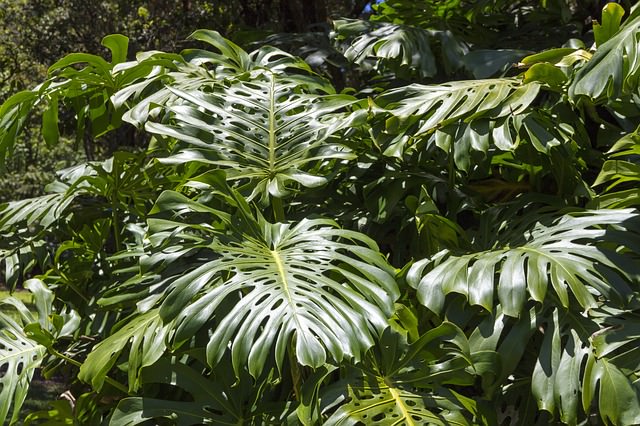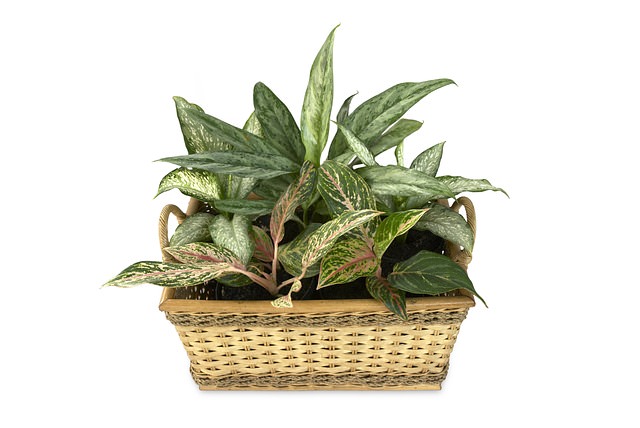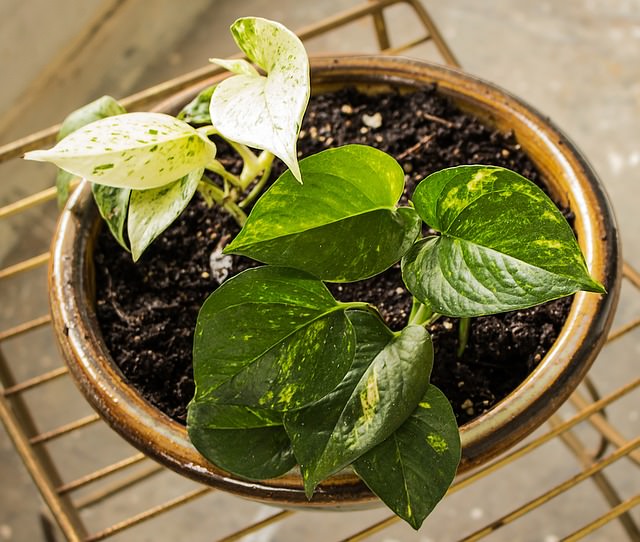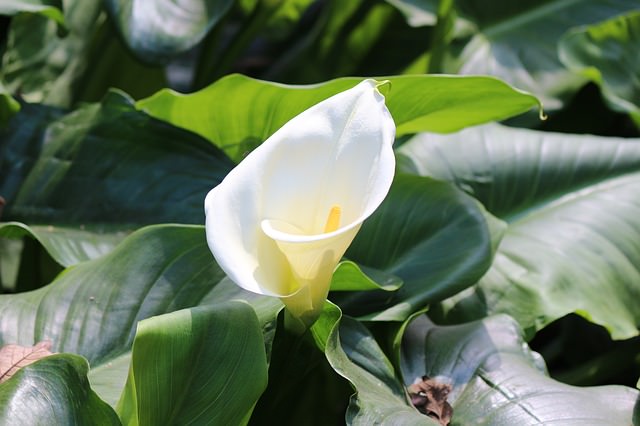The word “toxic” is applied to many plants. The word itself brings to mind images of horrific consequences and even death, but fortunately, few house plants are so dramatically deadly. Plants have evolved defense mechanisms over time to deter animals from damaging their foliage. It is interesting to note that some of these compounds that have been vilified in the press for harming pets are showing promise in medical research as potential cancer chemotherapeutics and groundbreaking treatments. Some of the villains are listed here and I have tried to explain their risk to pets.
#1 – Philodendron

Philodendrons contain insoluble oxalates, compounds that cause mucosal irritation. In 1961, a study found that a high percentage of pets that ingested this plant died, but later studies have been unable to reproduce this level of mortality.¹ Although it is probably wise to keep this plant unreachable to dogs and cats, I have never treated a case of philodendron toxicity.
#2 – Dieffenbachia

This pretty plant (also known as Dumb Cane) also contains insoluble oxalates that cause mucosal irritation to animals that chew on the leaves. Most animals will be deterred and not bother the plant again, but sometimes a bored house pet will ingest enough to cause increased salivation, difficulty swallowing and maybe vomiting. If you have this plant, it might be wise to keep it inaccessible to dogs and cats, but most pets will avoid it.
#3 – Pothos

Pothos (devils ivy) is another common and easy to maintain plant that has insoluble oxalates. It is mostly popular because it is attractive and is mildly toxic like the other oxalate plants. The effects are mostly in the mouth, possibly the esophagus and stomach, but most pets will sidestep such plants. It can be pretty scary for your pet to be salivating and acting like their mouth is burning, so try not to panic and call your vet.
#4 – Aloe

Aloe is a different class of toxic plants. It contains more than 1 potentially problematic agent, saponin and aloin. Saponin is an interesting compound that has been investigated recently as a natural source of antioxidants that may help treat Alzheimer’s disease³ and aloin has been suggested to have anti-tumor properties.⁴ But when eaten by your dog, saponin which is actually a foaming detergent like substance, can cause mouth irritation and similar signs as the oxalate containing plants. Aloin can cause a darkening of the urine in addition to vomiting and diarrhea. It has been suggested as a human supplement, but unfortunately can act as a powerful laxative and can lead to electrolyte imbalance and dehydration. It is a good idea to keep this plant out of reach of pets and if your dog eats aloe, you should call your vet. Your dog will be likely to recover, but it is safest to eliminate the risk by keeping this plant out of reach.
#3 – Lily

Lilies can be truly life-threatening for pets, especially cats are sensitive to lily, but dogs can become ill also. Signs of anorexia, lethargy and vomiting can occur quickly after ingestion. Complete kidney failure may result. Most lily type plants are toxic, including Easter lily, amaryllis and Lily of the Valley. Since this plant is potentially deadly, it might be best to not have it near your pet at all. If you think that your dog may have ingested part of a lily, do not delay and make your vet aware of your suspicion. In a retrospective study released in 2013, 100% of patients treated aggressively by veterinarians within 48 hours of lily ingestion survived, so prompt treatment is critical to a positive outcome. ⁵
No matter what your dog may have eaten, do not wait until he is acting sick to seek help. Rapid intervention can eliminate the source of toxicity before it ever invades your dog’s blood stream to cause its damaging effects. If your vet is not open, you can always contact Animal Poison Control at (888) 426-4435. They are available to answer questions 24 hours a day, 7 days a week, but there may be a consultation fee.
Thank you to Jennie L. for the question that inspired this article. Good luck in choosing your new houseplants!
Please find me on on Twitter, Facebook or Google+. I love hearing about your pets!
- Sellers, Sarah J.; King, Maralee; Aronson, Carl E.; Der Marderosian, Ara H. (April 1978). “Toxicologic assessment of Philodendron oxycardium Schott (Araceae) in domestic cats”.Veterinary and Human Toxicology 20 (2): 92–96.
- Kamal, Z et al.; “Anticholinesterse and antioxidant investigations of crude extracts, subsequent fractions, saponins and flavonoids of atriplex laciniata L.: potential effectiveness in Alzheimer’s and other neurological disorders”. Biological research, 2015 Apr 1;48(1):21
- Esmat, AY, Said, MM, Khalil SA, “Aloin: a natural antitumor anthraquinone glycoside with iron chelating and non-atherogenic activities”. Pharmaceutical Biology. , 2015 Jan;53(1):138-46
- Bennett AJ, Reineke, EL; “Outcome following gastrointestinal tract decontamination and intravenous fluid diuresis in cats with known lilyingestion: 25 cases (2001-2010)”. JAVMA 2013 Apr 15;242(8):1110-6. doi: 10.2460/javma.242.8.1110.
